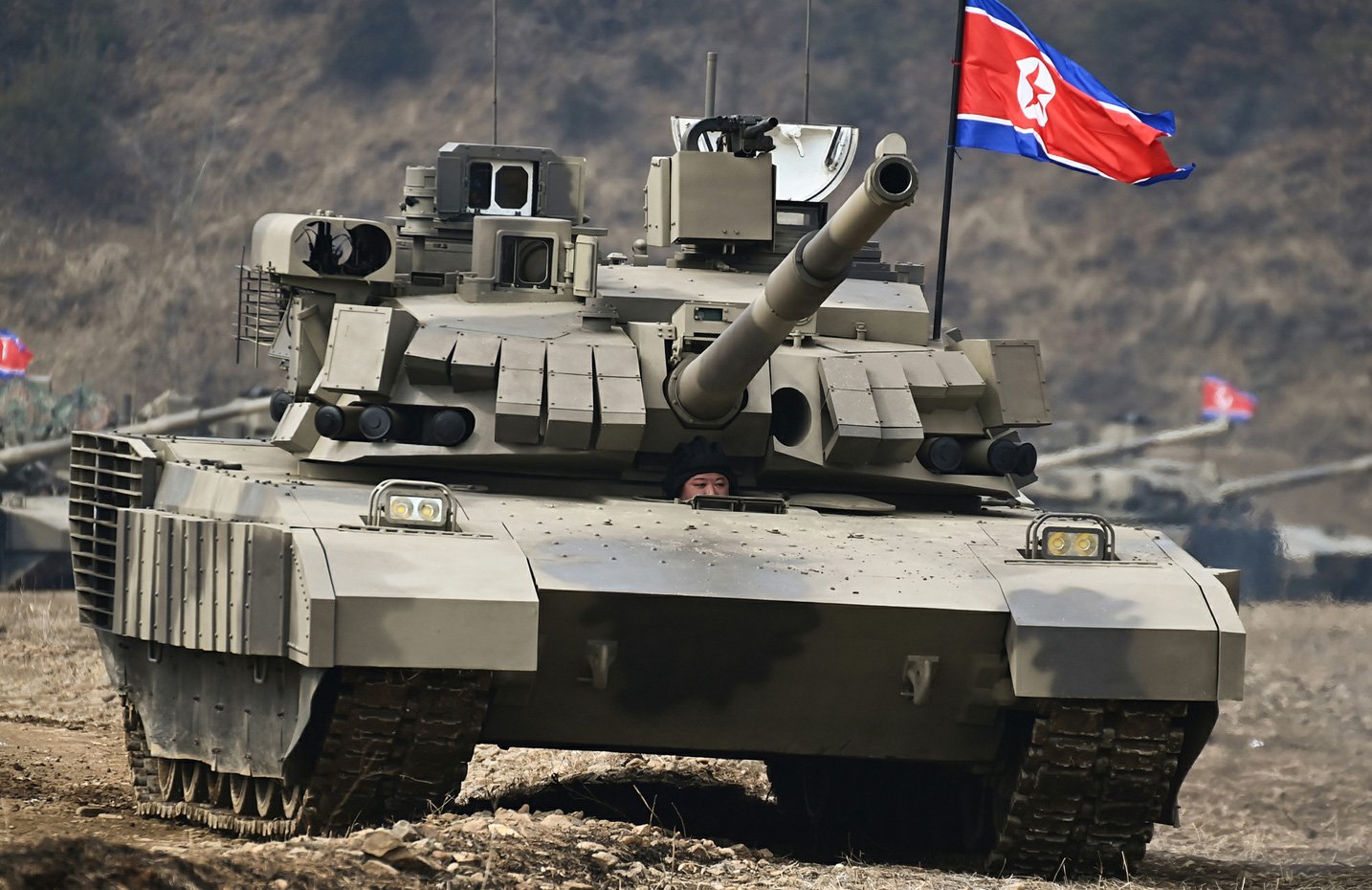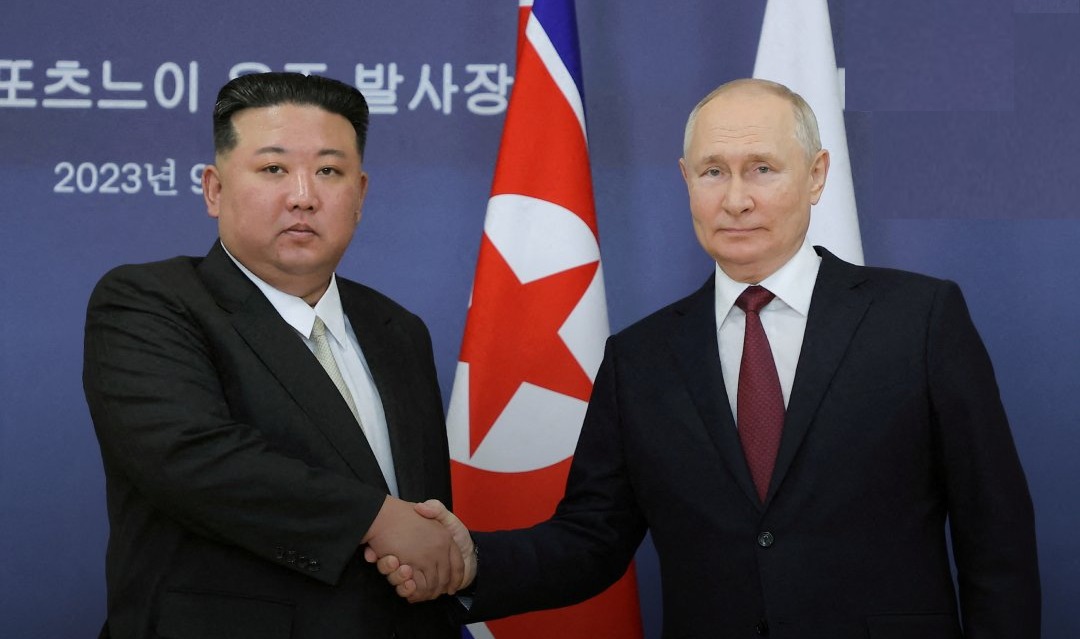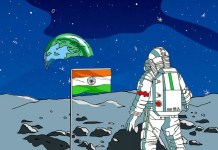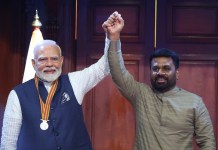Is North Korea China’s friend or Foe?
At first glance, this question looks very odd, given the traditional fraternal ties between China and North Korea and the depth of diplomatic and economic help that the former has provided to the latter.
However, on closer scrutiny, it appears that North Korea, of late, is finding Russia as its “true brother,” and the ever-growing closeness between Moscow and Pyongyang is becoming a strategic headache for Beijing.
Two recent developments prove China’s discomfort with North Korea.
One is the just-concluded “Freedom Edge” in the East China Sea, which brought together Japanese, South Korean, and American naval assets for the first time for multidomain maneuvers. The three-day (June 27-29) trilateral multi-domain exercise witnessed the engagement of multiple ships and aircraft from Japan, South Korea (ROK), and the U.S.
The U.S. forces taking part in the exercise were the Theodore Roosevelt Carrier Strike Group (CSG), comprising carrier USS Theodore Roosevelt (CVN-71) with embarked Carrier Air Wing (CVW) 11 and destroyers USS Halsey (DDG-97) and USS Daniel Inouye (DDG-118), along with a P-8 Poseidon Maritime Patrol Aircraft (MPA).
Japan was represented by the Japan Maritime Self-Defense Force (JMSDF), which deployed the destroyer helicopter carrier JS Ise (DDH-182), destroyer JS Atago (DDG-177), and a P-1 MPA.
South Korea participated with destroyers such as ROKS Seoae-Ryu-Seong-ryong (DDG-993) and ROKS Gang Gam-Chan (DDG-979). Its forces also included a ROKN Lynx helicopter, a ROKN P-3C Orion MPA, and F-16 Falcon fighters from the ROK Air Force.
Significantly, at the end of the exercise, the Joint Chiefs of Staff (JCS) of the three countries said that they looked to strengthen their deterrence of “cooperative Ballistic Missile Defense,” “Air Defense,” “Anti-Submarine Warfare,” Search and Rescue, Maritime Interdiction, and Defensive Cyber training against North Korean threats. “With Freedom Edge, South Korea, the U.S., and Japan enhanced our deterrence and response against North Korean nuclear and missile threats,” the JCS said in a statement.
Incidentally, on June 26, the day before this trilateral exercise, North Korea had claimed for the first time that it successfully tested a new multiple-warhead missile capability by separating mobile warheads that were guided correctly to three target coordinates.
“The test is aimed at securing the MIRV capability,” Pyongyang said officially, referring to multiple independently targetable re-entry vehicles. The launch, it added, was carried out using “the first-stage engine of an intermediate-range solid-fuel ballistic missile within a 170~200 km radius,” a move it said helped ensure safety and the ability to measure “the flight characteristics of individual mobile warheads.”
Pyongyang hailed the MIRV capability as one of “great significance in bolstering up (North Korea’s) missile forces and developing the missile technologies.”
Of course, North Korea’s claim has been challenged as “deception” by South Korea. But, the fact remains that North Korea is working on attaining the MIRV that would potentially allow for a single missile to drop nuclear warheads on a broad swath of targets, complicating missile defense efforts. “Freedom Edge,” thus, seems to have taken this North Korean challenge very seriously.
Pakistan’s JF-17 Gets Nuclear Capability? US Report Says PAF Arms ‘Thunder’ With RAAD Nuke Missile
China’s Worry
And here comes China’s worry. “Freedom Edge” and the similar exercises that the U.S. participates in, along with its allies and partners in the Indo-Pacific, adversely affect China’s overall strategic position in the global power equilibrium. Threats from North Korea drive South Korea, Japan, and the U.S. closer together, creating problems for Beijing in Northeast Asia.
All told, unlike North Korea or, for that matter, Russia, China would not foreclose its options of engaging with the U.S. and its allies for stability in this part of the world. Though this point will be further elaborated while discussing the second development, it is important to note that last month, Beijing resumed high-level talks with South Korea and Japan for the first time in more than four years.
The other major development is Russian President Vladimir Putin’s visit to North Korea on June 18, his first official visit to the country in 24 years. During the visit, Putin and North Korean supremo Kim Jong Un signed a “Treaty on Comprehensive Strategic Partnership,” which pledges immediate military and other assistance “by all of one’s means available” in the event of an attack against either country.
Pyongyang has accordingly announced that it will be sending troops in the form of a military engineering unit to support Russian forces in Donetsk. The troops are expected to arrive on the battlefield shortly.
As it is, North Korea has proved to be a great source of support for Russia in its war against Ukraine. After all, North Korea’s stockpiles of Soviet-style weapons and munitions are compatible with the Russian army’s systems. North Korea has a vast arms industry whose products are almost entirely modeled on Soviet ones that the Russian military knows well.
Reportedly, North Korea could provide drones and missiles such as the KN-23, which is almost a replica of the Russian Iskander ballistic missile, self-propelled howitzers, and multi-launch rocket systems. American experts strongly believe that North Korea has been already delivering 152mm (about 5.98 in) shells and Katyusha-type rockets to Russia for the best part of a year.
American and South Korean officials allege that North Korea has shipped thousands of containers filled with arms and missiles to Russia over the last year. What Russia has given in return stirs global apprehensions, including that of China.
Putin is said to have sympathetically looked at North Korea’s wish list, which includes nuclear weapons designs, re-entry vehicles for intercontinental ballistic missiles, as well as technology related to satellites, submarines, and hypersonic weapons.

Predictably, in April 2024, Russia voted against the extension of the mandate of the UN Panel of Experts that monitored international compliance with sanctions imposed on North Korea over the last 14 years. With Russia already using North Korean ballistic missiles in Ukraine, its veto, which now allows more space for North Korean nuclear and missile proliferation, is not surprising.
A recent study by the Center for Nonproliferation Studies reveals that North Korea developed 149 launches of missiles capable of delivering a payload of 500 kg over at least 300 km between January 2019 and April 2024.
These tests, along with investments in production capacities, have demonstrated qualitative improvements in maneuverability, precision, reliability, and the use of different launching platforms and bases, increasing North Korea’s overall operational readiness.
Also, North Korea is believed to possess between 20 and 60 nuclear weapons.
Experts say all this certainly does not please Beijing. Though China described the Putin-Kim summit as a diplomatic exercise between the two sovereign nations, it did not say anything to support what they did.
All told, until the Russian invasion of Ukraine, North Korea was hardly on the radar of Putin. It was China that always stood behind North Korea like a rock in all its difficulties; in fact, it fought against the Americans during the Korean War in the early 1950s to preserve the communist regime in Pyongyang.

China still provides North Korea with maximum economic help. It is reported to be accounting for more than 90 percent of North Korea’s trade.
Against this background, one can only imagine what China would have felt when welcoming Putin. North Korean strongman Kim said, “I stand with my Russian comrades, true friends and associates, in this solemn hall. Russia is North Korea’s most honest friend”.
That for North Korea, Russia is the “true and honest friend” could not have pleased the Chinese ears.
In any case, the “Treaty on Comprehensive Strategic Partnership” that North Korea and Russia have signed does have ominous implications for China.
If Pyongyang does send its troops and gets involved directly in the Ukraine war, it may invite Western retaliation. In that case, the mutual defense agreement in the “Treaty on Friendship, Co-operation, and Mutual Assistance” between China and North Korea, signed in 1961, will come into play, forcing China to intervene militarily against America and its allies. China certainly does not want that to be the case.
All told China’s support to Russia in the Ukraine War has so far been limited to diplomatic and economic arenas. Chinese President Xi Jinping has not condemned Russia’s invasion of Ukraine, but he has walked a tightrope, and there is no evidence that he has directly offered weapons to Putin.
Similarly, Xi has never supported, publicly at least, North Korea’s nuclear proliferation in the region.
China’s role in the United Nations against North Korea may be ambiguous, but it is not in China’s interests to appear complicit in proliferation. China seeks to avoid the prospect of an increasingly capable and provocative nuclear North Korea on its border. Such a scenario may engender heightened US involvement in Northeast Asia and the potential deployment of US nuclear assets to the region.
Furthermore, it could catalyze the development of nuclear programs in South Korea and Japan, for which the two are eminently capable. This explains why China joined Japan and South Korea last month in supporting the denuclearisation of the Korean peninsula at the trilateral summit.
In sum, China has every reason to be unhappy about Kim and Putin’s budding friendship. This friendship could destabilize the region of North East Asia that Xi would prefer to stay calm, given his utmost attention at present to defend China’s interests in the South China Sea and realizing Chinese sovereignty over Taiwan.
- Author and veteran journalist Prakash Nanda is Chairman of the Editorial Board – EurAsian Times and has commented on politics, foreign policy, and strategic affairs for nearly three decades. A former National Fellow of the Indian Council for Historical Research and recipient of the Seoul Peace Prize Scholarship, he is also a Distinguished Fellow at the Institute of Peace and Conflict Studies.
- VIEWS PERSONAL OF THE AUTHOR
- CONTACT: prakash.nanda (at) hotmail.com
- Follow EurAsian Times on Google News




